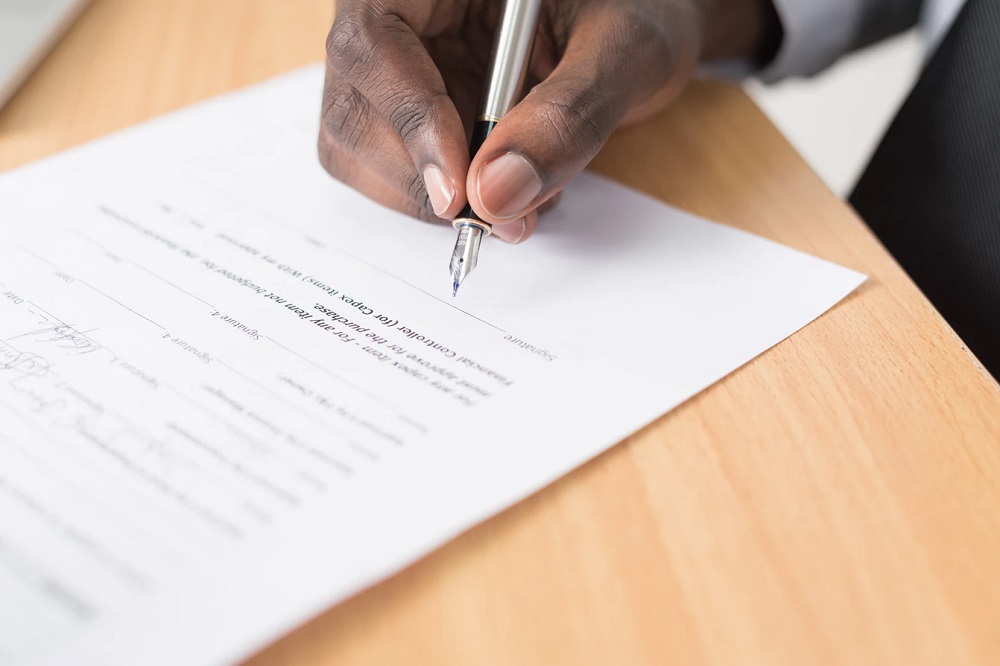Does a Release of Liability Need To Be Notarized?

If you are participating in an activity where injuries or illnesses may occur, then you might want to ask your participants to sign something called a waiver of liability. At the same time, there may be some situations where a waiver of liability could have to get notarized. If you need to get a release of liability notarized, what do you need to know about this process? How can you make sure this is done properly? There are several steps you should keep in mind, and it might be possible for you to expedite this process if you can get your waiver of liability notarized online.
What Is a Release of Liability?
A release of liability, also known as a waiver of liability, is a legal agreement that two separate parties will enter into together. One party waives the right to hold another party responsible. Even though someone may say they are not going to hold the other person responsible, it is always better to make sure this is documented. If there is a reasonable risk of injury or illness, then it may be necessary to get a waiver of liability signed.
In this liability agreement, each party is acknowledging that they are aware that there is a possibility of an injury occurring. They are also acknowledging that they are entering into this agreement voluntarily. In addition, they are waiving the ability to hold the other person responsible in court. There are a lot of individuals and businesses who protect themselves against potential lawsuits by making all participants sign a waiver or release of liability before they participate.
There are several other names that could be used to describe some of the documentation. This could include a general waiver, a hold harmless agreement, a legal release, a discharge of liability, or a liability exemption. There are situations where this waiver might also need to be notarized before it is legally binding.

When To Use a Release of Liability
There are several situations where one party may want to use a release of liability before the activity begins. A few examples include:
- Anything Involving a Risk of Injury: One of the most common situations where this release of liability could be required has to do with any activities that involve a risk of injury. For example, it is not unusual for people to sign a waiver of liability before they go rock climbing, skiing, scuba diving, or as they enter an amusement park.
- Anything Involving a Risk of Illness: There are also some activities or someone may run the risk of falling ill. For example, if someone is getting ready to climb to the top of the mountain, they may run the risk of developing hypothermia. They need to acknowledge this risk before the activity begins.
- Releases for Photographs: A release of liability will also be used if someone is having their photograph taken. This is particularly important before someone has their photograph taken for a news publication.
- Releases for Information: If someone is allowing his or her confidential information to be released to the public, such as confidential medical information, that person may be required to sign a waiver before the information is released.
- Mechanical Equipment: Finally, someone might be asked to sign a waiver or release of liability before they get ready to use heavy machinery. Their knowledge that there is a risk of injury, and they are for forfeiting their right to impose a lien on a property.
These are just a few of the many examples where a release of liability could be used. It is important to make sure this liability release is included before any activities move forward.
Does a Release of Liability Need To Be Notarized?
Yes, there are many situations where a waiver or release of liability will need to be notarized. A public notary will have to certify that the identities of the individuals in the document are true and correct. This is important for making sure that each party has entered into this agreement voluntarily. The notary is responsible for making sure the form has been filled out properly. The notary may also need to ask a few questions to make sure the identities of the people are correct and that everyone understands the information in the form. After the release of liability has been notarized, the document should be legally enforceable. Therefore, it is important for everyone to make sure they get this document notarized before it becomes final.
How To Prepare a Release of Liability
It is important to make sure that all the necessary components are included in this release of liability. A few of the most important components include:
- Demographic Information: First, it is important to include the name and contact information of all parties involved. This includes the names, addresses, phone numbers, and the date into which this agreement is being entered.
- The Defining Terms: Next, it is also important to define all terms used in the contract. If there are any terms that are not clearly understood, they need to be defined before the documentation to move forward.
- A Clear Description of All Risks: It is important to clearly specify all risks involved in the activity. This includes any risk of injury or illness. This document is supposed to state that all parties understand the risks involved. It is important to define what these risks are.
- A Statement of Release: Finally, it is also important to include a clear statement of release. For example, it should state that one party agrees to release the other party from all liability, damages, costs, demands, expenses, and anything else that could be used against the other person in a court of law.
Keep in mind that this release of liability can be one small part of a larger contract or documented on its own. It is important to make sure all of this information is clear in the waiver.
How To Get the Release of Liability Notarized Online

Even though it is certainly possible to get a document notarized in person, this can be expensive, take too long, and lead to a significant amount of stress. Fortunately, it is now possible to get documents notarized online, including a waiver of liability, through services such as OneNotary. The goal is to make this process as easy as possible.
In order to get a release of liability notarized online, a few steps include:
- First, take a look at the available times. See what works for your schedule. Then, sign up for an appointment slot.
- After you sign up for an appointment, you should receive an email invitation. This should contain a link that you can use to visit your appointment slot.
- You’ll be asked to upload the necessary documents before the appointment time. That way, the notary has time to review the documents before your appointment begins.
- In order to confirm your identity, you may be asked a few questions about your history. Make sure you answer these questions accurately so that you can verify your identity is the same as the person on the document.
- When your appointment time comes up, log in and meet your notary for a session online. This will probably be done using FaceTime, so it should be relatively straightforward. You will also have the opportunity to test your audio-video equipment before the appointment begins.
- After the appointment is done, give the notary a little while to finish the process. Then, you should get an email saying that your documents are ready to be downloaded. You can download your notarized documents and move forward with your day!
By following these steps, it is possible to save a lot of time and money by getting the document notarized online. There are always reliable notaries available, so everyone should explore the possibilities when it comes to getting a document notarized online.
Frequently Asked Questions
There are a few common questions people have about getting a release or waiver of liability notarized online. They include:
What is a waiver or release of liability?
A waiver of liability is an agreement that both parties enter into voluntarily. One party is agreeing to release the other party from all liability related to the activity. This is commonly used before someone participates in an activity that has a risk of injury or illness.
Why do I need to get this waiver of liability notarized?
You need to get a waiver of liability notarized because the notarization process verifies that all the information in the document is true and correct. Without a notary seal, the document may not be enforceable.
Is a waiver of liability legally binding?
As long as the waiver of liability has been notarized and all essential elements are included, it should be legally binding. To learn more about the enforceability of a waiver of liability, it is a good idea to reach out to an attorney who has experience in this area.





